In “The Galactic Barrier,” Star Trek: Discovery serves up the third episode in a row where great character work and exciting action sequences are entirely undermined by the plodding and conventional structure to this season’s overarching story. Episodes should not feel like they are marking time on the way to a grand finale, but “The Galactic Barrier” feels exactly that way — and it’s not yet clear to me that the finale it is building towards will be all that grand.
After the events of “Rubicon,” in which Book and Tarka’s successful attempt to destroy the DMA was immediately reversed by the appearance of a new one in its place, Starfleet and the Federation have fast tracked the need to pursue their original plan: to make first contact with the mysterious Species 10-C. Meanwhile, Book and Tarka are not entirely dissuaded from their mission, and like Discovery, they realize the key to their mission lies outside the galaxy.
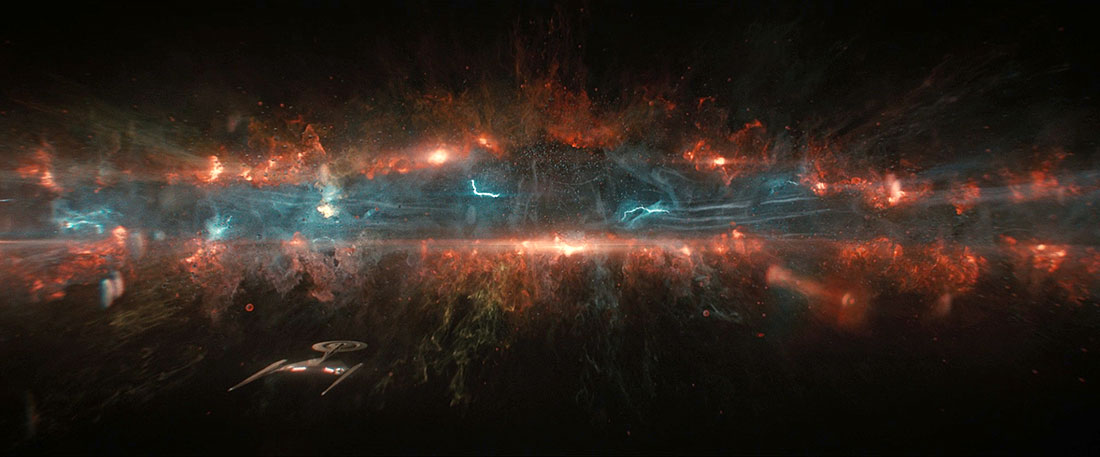
The new DMA is immensely more powerful than the original, and after Stamets (Anthony Rapp) calculates that their week of prep time has been shortened to a mere 12 hours, Federation leadership cuts their planning time orders Discovery to the Galactic Barrier as quickly as possible.
The starship jumps through the mycelial network and lands a few light years from the edge of the Milky Way, with a plan to venture through the powerful energy field with newly-installed shielding upgrades to hopefully prevent any Gary Mitchell situations.
The visual effects of the Galactic Barrier were terrific, giving it a much more complex and lifelike appearance than the cloudy pink look seen in previous appearances. And the sequences of Discovery working to make its way through the Galactic Barrier were technically adept.
I was a little disappointed though, that there wasn’t more than a glancing reference to the reason why Discovery’s mission was so dangerous (a blink-and-you’ll-miss-it mention of brain damage)? It was a lot of fun to see the wide variety of old-school Starfleet translation devices during the opening conference scene, but if “The Galactic Barrier” was really going to go all-in on a canon connection… why not spend that energy on making viewers understand why the titular galactic boundary is so difficult to pass through, beyond a little lighting and some occasional desaturation?
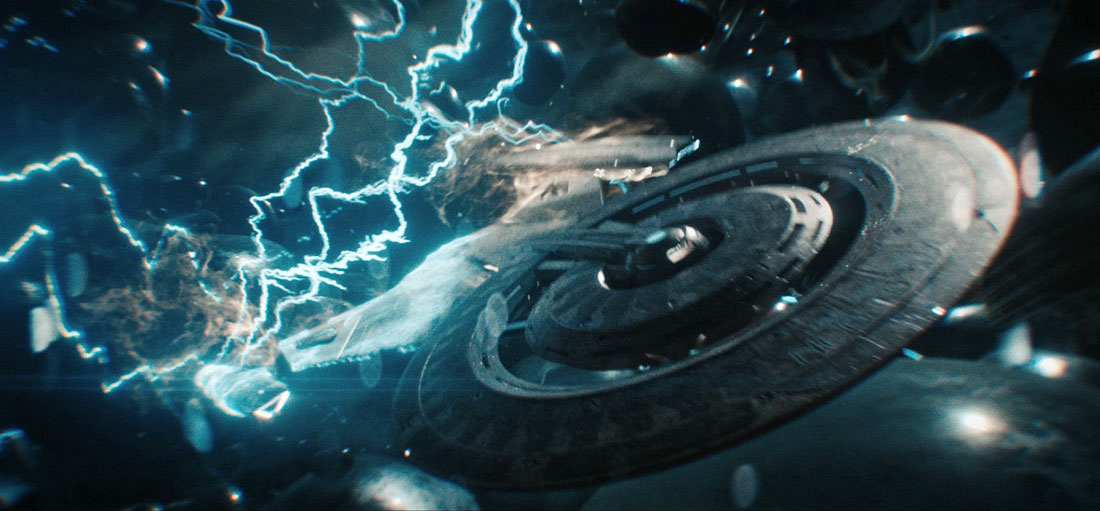
While all that extra-galactic stuff is going on, Booker (David Ajala) and Tarka (Shawn Doyle) head back to the site of the scientist’s Emerald Chain captivity to find a secret stash of programmable antimatter left behind at the abandoned research facility.
The exploration of Tarka’s past — and the introduction of his cell mate turned friend-turned-partner, Oros (Supernatural’s Osric Chau) — was a touching one, with some great performances from both Doyle and Chau. It was nice to get a more rounded exploration of the character beyond being very arrogant, and to see more of his partner’s quest to travel to another universe and what drives Tarka.
The decision to reveal that Tarka does not even know for sure whether his partner even made it to the alternate universe adds even more emotional complexity to the character, and is well received.
But it’s tough to look at the two main plots of this week’s episode without being focused on where it stands in the wider season arc for Discovery — and it’s at that point I can’t help but feel like everything that’s good and great about “The Galactic Barrier” (and the two previous episodes, in my opinion) is being completely undermined by a year-long story arc that too closely mirrors Seasons 2 and 3.

Discovery does not seem to remember how to tell a season-long story outside the structural box it has used for the last three seasons. Another year, another big mystery-box question. Who is the Red Angel? What caused the Burn? Who created the DMA?
There is nothing inherently wrong with basing a whole season’s arc around a single question, and slowly feeding information throughout the season that builds towards a big reveal at the season’s end. Personally, I really enjoyed the third season and the whole arc right through to the end — but at this point, as we go through these motions for yet another year, there’s no drama or surprises left about when the relevant story beats will hit.
It’s been clear for the last five episodes that the reveal of the identity of Species 10-C would be held for the season’s final act, and every passing week feels like the show dragging its feet until the last two or three hours finally get here. Just as the Red Angel and Burn mysteries weren’t answered until the end of each year, Discovery’s writers seem to think we’ll lose interest in the story if they answer the Big Question too early.
We know the structure, and we know we have to wait until the end of the season — so why does any of this really matter? I mean, it should matter! It’s exciting to see Discovery pass through the Galactic Barrier, and it’s touching to learn about Tarka’s backstory, but this season also feels like it’s reverse-engineered out of a “How do we fill time until it’s finally time to make the big reveal?”
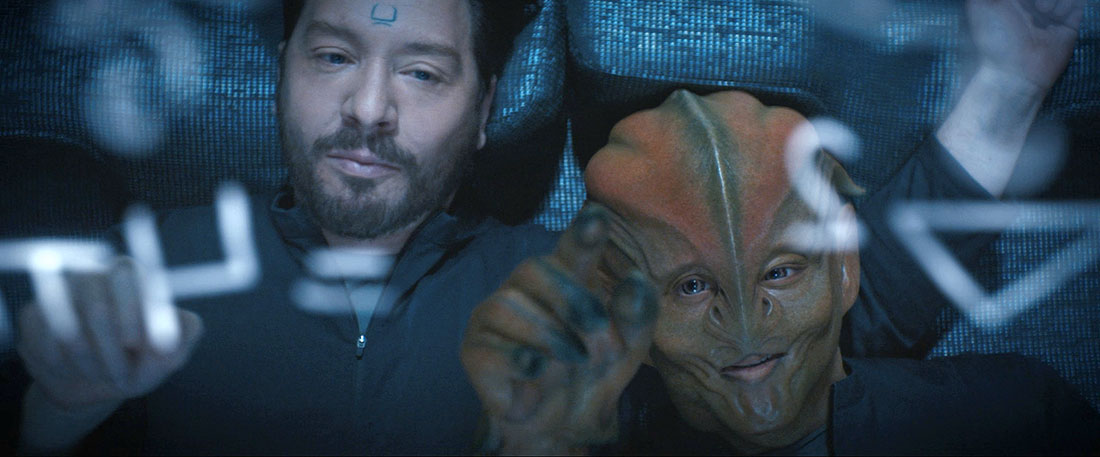
But with this looming DMA story, even the ratcheting up of the stakes at the end and the reveal that Earth, Titan and Ni’Var are now threatened feels pretty rote at this point. For all its flaws and foibles, Discovery’s first season at least gave us its most novel structure yet, with two distinct but interweaving narratives playing out through the season: the Klingon War and the Mirror Universe.
But for three years now, this show’s structure has been the same. Sure, the question changes and the way the characters reach the answer is different, but the fact that there is a question and that the answer will be revealed in the season’s final act is a forgone conclusion.
I want to care about this show’s characters and events solely for the purpose of caring about the characters and events, and not because they form more obligatory pieces to a puzzle Discovery wants us to put together each season, and then take apart, and then rebuild the next season. I’ve built this puzzle before, and I’m ready for something new.

At this stage – more acutely than I think for even Seasons 2 and 3 where this structurally felt more novel for Star Trek – the success or failure of Season 4 is entirely riding on its ending. As stated, I really enjoyed Season 3, and I also enjoyed how they subverted the expectation that the cause of The Burn was going to be something huge — and instead told an intimate tale of loss and grief. But having just done that, the only way not to avoid completely rehashing Season 3 in both tone and structure is to go big.
Showrunner Michelle Paradise has said that Species 10-C is something entirely new to Star Trek. I hope they are as impressively weird and alien as they have been teased throughout this whole season, because the entire story arc is riding on it. If the ending pays off, the journey along the way feels less tiresome. If it does not, then much of this season will feel lifeless.
That’s a sad thing to say about Discovery, which has had so many groundbreaking and exciting moments as it shepherded this new era of Star Trek back to TV. But with some of the newer shows forging more interesting ground and playing with different formulas, Discovery is at risk of losing its place in the conversation – especially since it will need to compete with the opening weeks of Star Trek: Picard Season 2 going forward.
OBSERVATION LOUNGE
- Dr. Kovich (David Cronenberg) notes that Vulcans observed Earth for “nearly a century before First Contact,” referring to survey missions like the one seen in “Carbon Creek.”
- Kovich implies that he’s managing something that’s an even bigger threat to the Federation than the DMA, but won’t share with the council. A hint towards Season 5’s story, or just more oh-isn’t-Kovich-mysterious business?
- Adira (Blu del Barrio) returns for the first time since December, after traveling to Trill with Gray in “But to Connect.”
- Saru (Doug Jones) confesses his “more than friends” feelings to President T’Rina (Tara Rosling)… just before she’s called away on urgent business, an awkward moment only compounded by her sudden reappearance aboard Discovery during the mission. Despite the Vulcan’s emotionally-suppressed worry about her homeworld, hopefully these two crazy kids will get this thing sorted out by the finale!
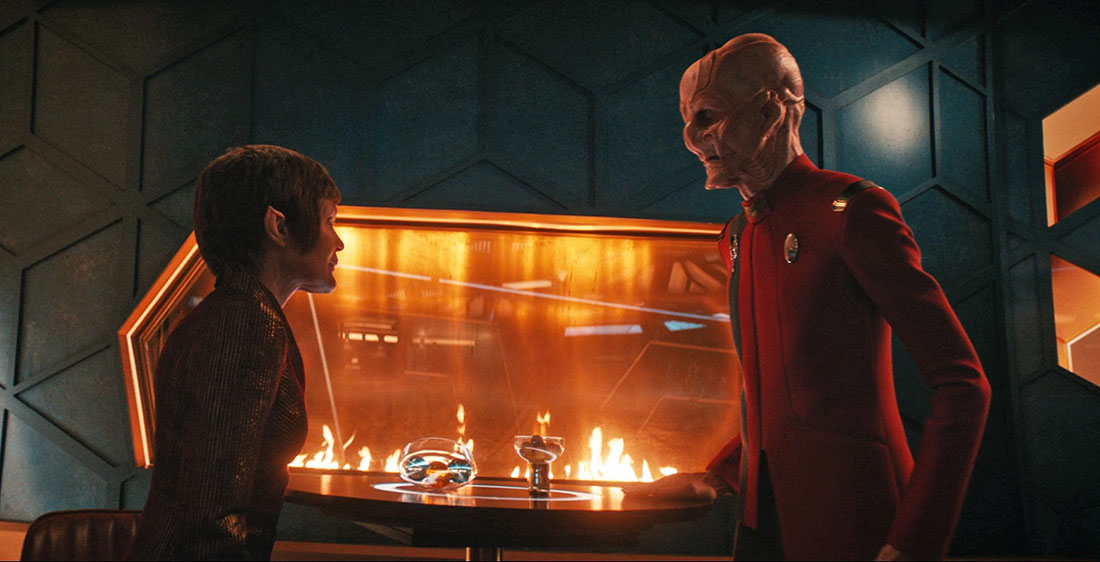
- Captain Burnham (Sonequa Martin-Green) and President Rillak (Chelah Horsdal) work together which much less friction this mission, though the pair do debate whether or not to share that Earth, Titan, and Ni’Var are in the new DMA’s path of destruction.
With such a big decision — to keep the truth from the Discovery crew, or to rock everyone with the disastrous news during a critical moment in the mission — wouldn’t it have been prudent to bring ship’s counselor Dr. Culber (Wilson Cruz) into the conversation?
- The mycelial network was described as “veins and muscles that hold our galaxies together” in Season 1, said to span the entire universe and all multiverses as well — but apparently there’s no reception near the Galactic Barrier.
- It certainly seems like this episode may mark the last time we’ll Lt. Commander Bryce (Ronnie Rowe, Jr.), as Saru spends a few moments wishing the officer well as he transfers to Kovich’s service at Starfleet Command.
Rowe joined the new BET+ series The Porter in 2021, leading to the actor’s minimal screen time in Season 4.
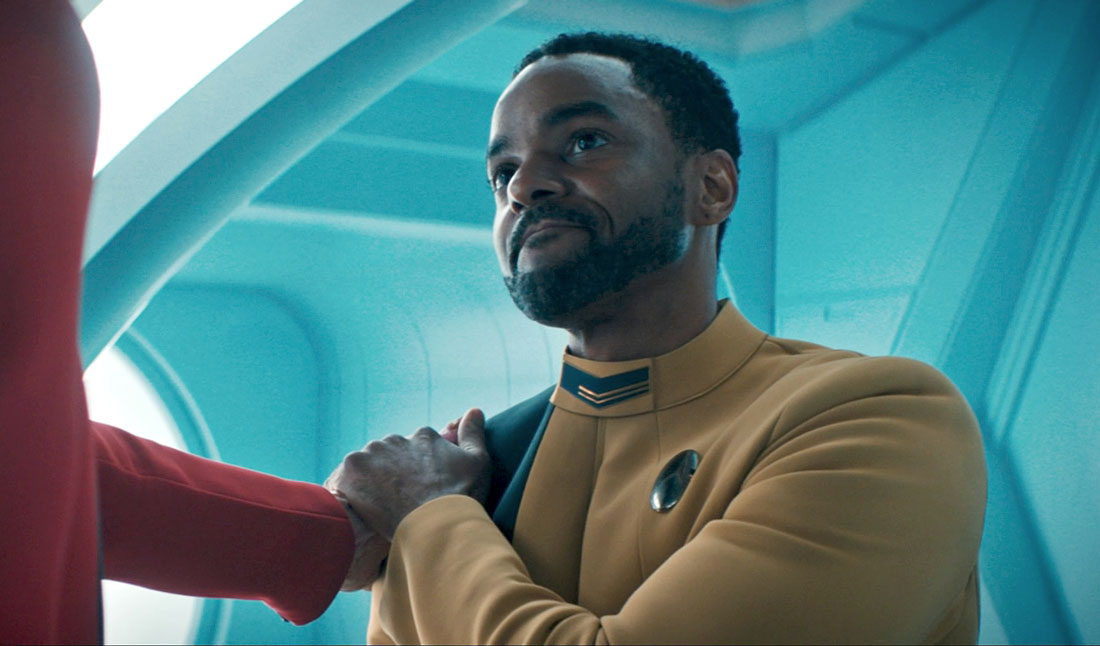
- Classic Star Trek communication technology seen during the mission briefing include both Enterprise-era universal translators (plug-and-play and wearable types), an Original Series-era hand-held translator, andNext Generation-era, Voyager-era, and Picard-era Starfleet combadges.
Also seen on the table is a flip-open communicator which resembles the classic Trek device, but with a more modern design: perhaps a new communicator we’ll see aboard the Enterprise in Star Trek: Strange New Worlds this May?
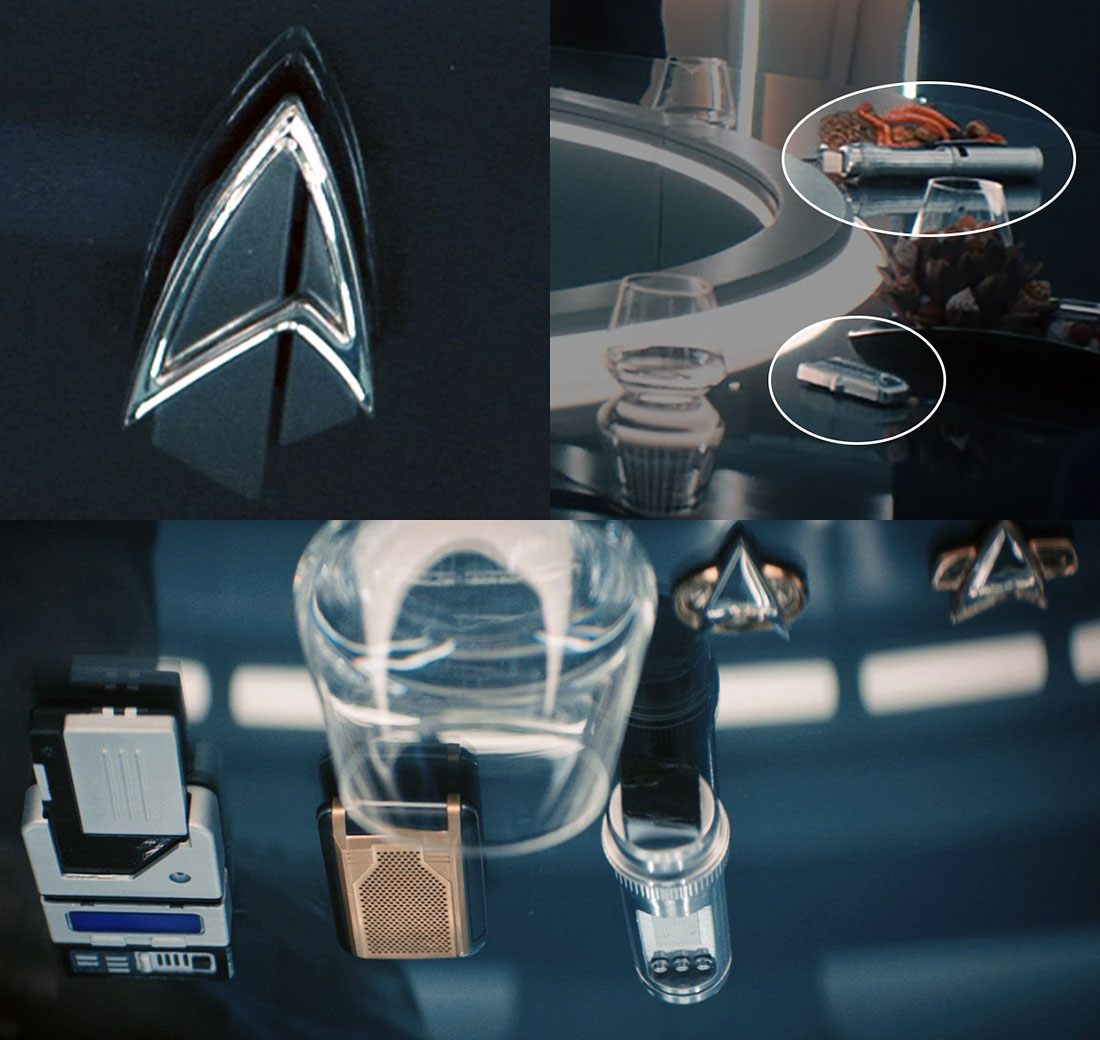
There was a lot to like about “The Galactic Barrier.” But I can’t shake how bored I feel with the overall season long arc, and how Discovery has chosen to structure this narrative. It is doing a huge disservice to the great performances, dazzling effects, and engaging relationships that this show should embrace more just for the sake of it.
As Discovery begins to spin up writing and production on its recently-announced, ten-episode fifth season, I hope they look very seriously at mixing up the show’s narrative structure — with three fewer episodes to drag its feet, it’s time for a new approach.
![]()
Star Trek: Discovery returns March 2 on Paramount+ in the United States, and on CTV Sci Fi Channel and Crave in Canada. Outside of North America, the series is available on Paramount+ and on Pluto TV in select international locations.
